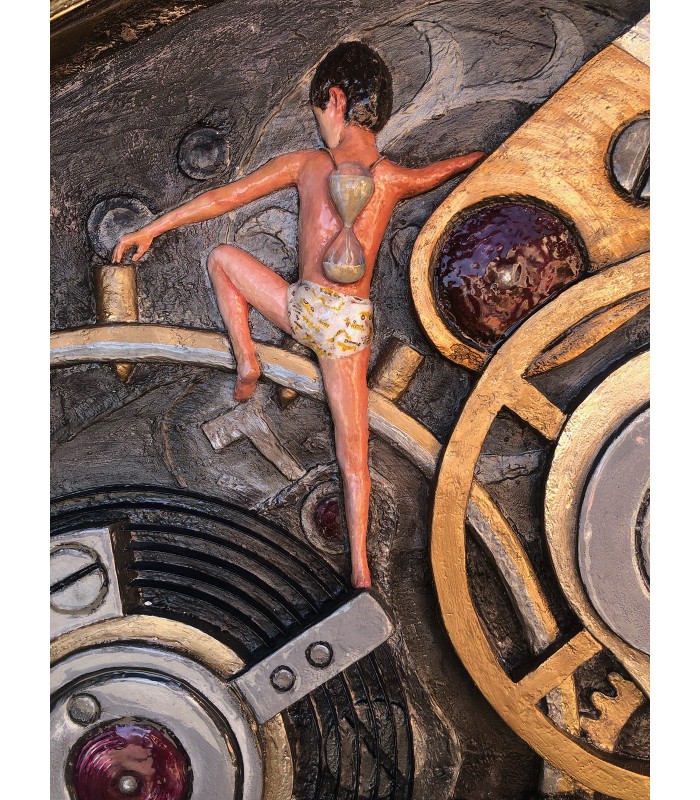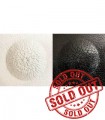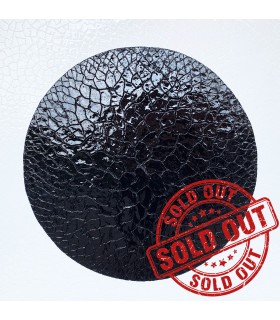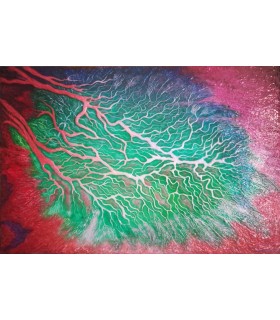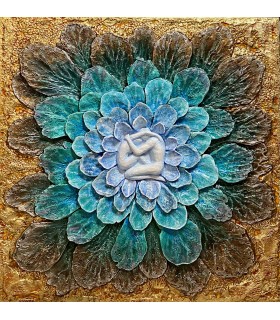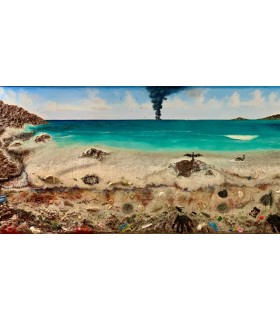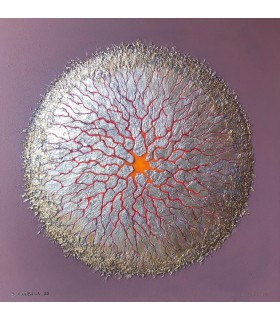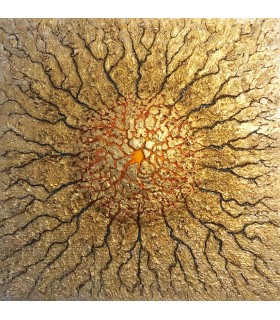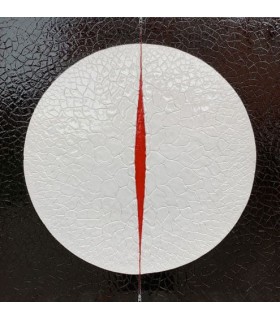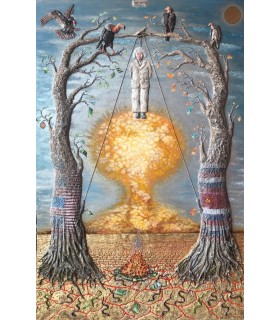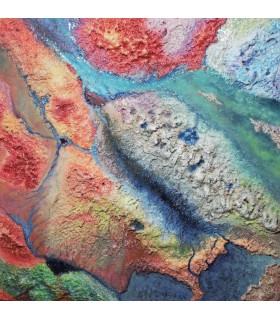1.82x1.82 Sculpture in bas-relief on wood panel handmade by the author. 2020
1.82x1.82 Sculpture in bas-relief on wood panel handmade by the author. Materials used: metal paints, acrylic and oil paints, extruded polystyrene, epoxy resin, polyurethane foam, glues and putties. 2020
Inspirational and chronological history of the work.
The inspiration, born a few years ago reflecting on the relationship "Time-Freedom", was certainly influenced by my long professional life in close contact with watchmaking. First of all, I carried out research verifying that no one else had ever done the kind of work I had in mind, because defending the uniqueness of the work I am going to do has always been a primary rule for me. Moreover, when I went to reproduce a watch, this had to be, in my opinion, absolutely the Top, a collector's item. So I came up with the idea of making a large piece, thinking of faithfully enlarging one of the most complicated mechanical movements in the world of watchmaking: a fine vintage watch, Swiss (by Chaux -de-Fonds), pocket watch, in gold, marked "Humbert Ramuz" (name of the founder), with time function, stopwatch, and sound repeater of the four hourly phases, awarded a gold medal at the Paris Expo in 1889. I was aware that I was venturing into a complex work that would take a long time and present many obstacles but, being an idealist, I always liked challenges to the limit. The construction of the large circular panel was the first problem. I had thought of a size of 2 meters but I had to reduce it to m.1.82 because the wooden structure would certainly curve. Second problem: the possible transport of the work; for this reason I built two semicircles of m.1.82 x 0.91, with a supporting radius, which could be joined or separated at will with special steel keys. At this point, following a predefined scheme, I started the construction of the actual mechanism, at several material levels, using my usual materials, various colors and vitrifications that would highlight the shiny and opaque surfaces. Once the clock mechanism was completed, I began to develop the concept of my inspiration: "Today's man is increasingly wrapped up in the cogs of the past, stealing his freedom and sometimes even his dignity; he often notices it when it is too late".
To develop this theme I thought of involving three generations and compare them. Advised by my daughter I decided to "fish" in the family choosing myself, my son and my grandson. Now it was a question of inserting the three actors and establishing the action that should facilitate the reception of the final message addressed to the observer of the work. It was not easy because it was necessary to insert these characters in strategic positions of the mechanism, which had to provide precise points of support to justify the action. The proportion of the three was also very important because it should not break the visual balance between the imaginative movement of the mechanical parts and the human one, on the contrary, if possible harmonize the overall scene. At the same time the contrast between the cold action of the mechanical device and the vivid action of the three characters had to be accentuated. My nephew in colored panties represents the first age, innocence, with the hourglass of time still almost full climbing upwards, he is in a hurry to grow, even his support foot tries to anticipate time by lowering the lever towards the "A" (anticipation). My son, in fashionable clothes, represents the second age with the hourglass of time half full; a young career man in constant movement (money in hand, cell phone in pocket) who is dragged by the long tie by the central gear representing the assembly line and therefore the conditioning and indoctrination of modern man. And then there's me sitting at the bottom, finally in unconventional clothes, which means a reached and conquered freedom of expression; third age at the gates, I observe the sand that remains in my hourglass, the age that must be that of reflecting on how one has spent one's past time that will not return and what one wants from what remains to live.
During the realization of my works, in my head, there is almost always in the background a music or a song that hums and accompanies the progress of my work. In this case it was "La stagione dell'amore" by Franco Battiato.
A curiosity: when the opera was almost finished, coincidentally or perhaps not, I saw some images of a silent film from as far back as 1936 entitled "Modern Times" with a Charlot forced into a series of gears similar to those of my watch. Charlie Chaplin had anticipated the times by addressing the theme of the man captive on the assembly line in a factory. Incredible, isn't it?
